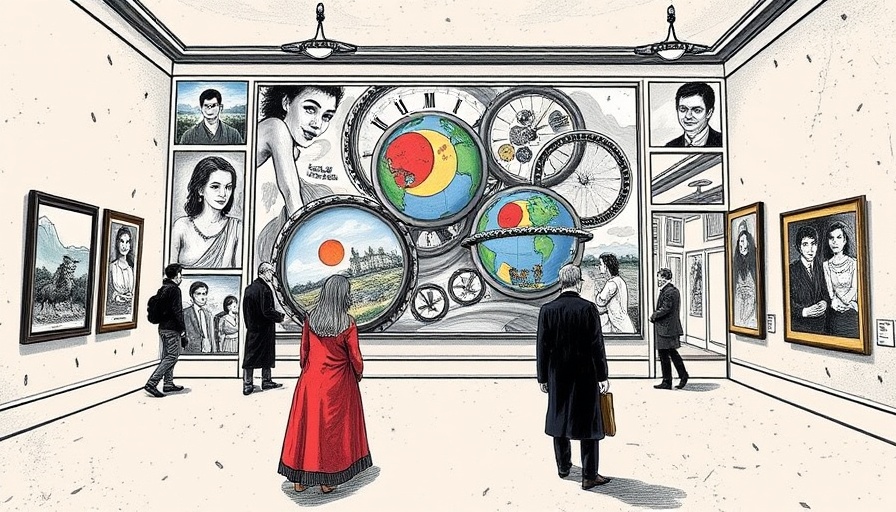
Can Art Play a Lifesaving Role? Exploring Its Power
The recent unveiling of Ahmet Öğüt's artwork, Saved by the Whale’s Tail, Saved by Art, at Stratford station, London, raises an intriguing question: can art truly save lives? In this particular instance, the artwork symbolizes hope and survival after a near-disaster in Rotterdam, where the sculpture miraculously prevented a train from plunging into water. This incident begs the larger inquiry: beyond the physical realm, can art serve as a transformative force for mental health and well-being?
Historical Context and Background
Throughout history, art has often intersected with life-saving measures. During World War II, art therapies emerged as vital tools within psychiatric institutions. Margaret Naumburg’s pioneering work demonstrated that creative expression could facilitate healing for those suffering from severe mental health issues. Similarly, the engagement of poets like Allen Ginsberg in art therapy showcased the therapeutic benefits of creativity. Such historical precedents underpin the view that art isn’t just a luxury or a distraction—it can be a crucial aspect of recovery and emotional resilience.
The Emotional Impact of Creativity
For many, engaging in art or the act of creation becomes a sanctuary of emotional expression. A reader shared, "Art has been a thread throughout my life... it’s saved me many times." This resonates with those who find solace in creative pursuits, whether through painting, writing, or music. The therapeutic benefits extend beyond the canvas; they embrace the deeper connections to emotional health, offering a route to processing thoughts and feelings that might otherwise remain unexpressed.
Art as a Medium for Social Awareness
Notably, artists like Olafur Eliasson utilize their platforms to raise awareness about critical global issues, such as climate change. His installations featuring melting ice not only captivate spectators but also provoke dialogue about humanity’s role in environmental degradation. The hope is that such artistic expressions can inspire individuals and communities to act, potentially leading to life-saving changes in behaviors and policies that affect our planet.
The Connection Between Art and Mental Health
The relationship between art and mental health is well-documented, especially in the context of modern wellness practices. Research indicates that engaging in creative activities can release endorphins, the body's natural stress relievers. Furthermore, practices such as mindfulness meditation can be complemented by art-making, promoting holistic wellness. This is crucial in our fast-paced world where stress and anxiety can create barriers to overall health.
Counterarguments and Diverse Perspectives
Of course, while many celebrate the virtues of art, some argue that its potential to save lives may be overstated. As one reader noted, the whale tail's function as a lifesaver was undoubtedly a coincidence. Critics may challenge the idea that art serves a practical purpose in crisis situations, questioning its role against concrete solutions like policy changes or medical interventions. But perhaps the true power of art lies in its ability to inspire, educate, and evoke change in ways that other mediums cannot.
Conclusion: A Call to Embrace Art in Daily Life
Whether or not art can save lives in the literal sense remains debatable. Yet, one thing is clear: art enriches lives, enhances well-being, and fosters community spirit. By integrating creativity into our daily wellness routines, we can reap benefits that support mental health and overall balance. As we reflect on the power of creativity, let’s embrace it as an essential component of our health toolkit.
Incorporating art into our daily lives doesn’t just uplift our spirits; it promotes a holistic approach to well-being. Join local art classes, visit galleries, or engage in creative hobbies—every little bit contributes to a balanced lifestyle. Explore what resonates with you personally and remember that the act of creation itself can be a lifesaver.
 Add Element
Add Element  Add Row
Add Row 



Write A Comment